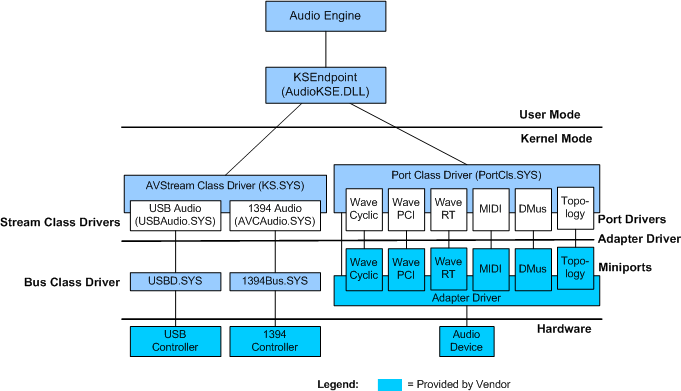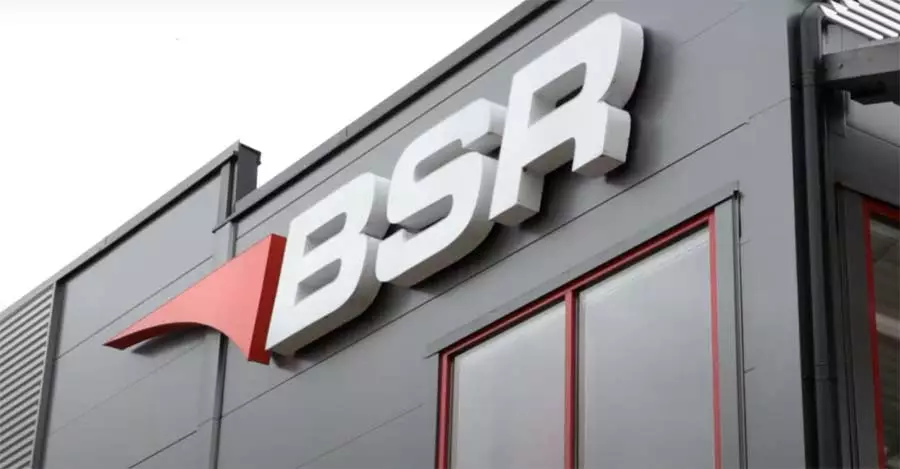Drivers BSR Port Devices
Before you begin
Driver updates for Windows 10, along with many devices, such as network adapters, monitors, printers, and video cards, are automatically downloaded and installed through Windows Update. You probably already have the most recent drivers, but if you'd like to manually update or reinstall a driver, here's how:
Update the device driver
In the search box on the taskbar, enter device manager, then select Device Manager.
Select a category to see names of devices, then right-click (or press and hold) the one you’d like to update.
Select Search automatically for updated driver software.
Select Update Driver.
If Windows doesn't find a new driver, you can try looking for one on the device manufacturer's website and follow their instructions.
If your port is a combo eSATA/USB port, it might only be offering enough power to drive USB devices, not necessarily SATA drives. If you have a way to test with an enclosure or adapter that uses a regular SATA cable and then a wall AC adapter, I'd be curious if that worked. Select Update Driver. If Windows doesn't find a new driver, you can try looking for one on the device manufacturer's website and follow their instructions. Reinstall the device driver. In the search box on the taskbar, enter device manager, then select Device Manager. Right-click (or press and hold) the name of the device, and select Uninstall. Driver pairs like (miniport, port) can make driver development easier. In a driver pair, one driver handles general tasks that are common to a whole collection of devices, while the other driver handles tasks that are specific to an individual device. Thanks, but a search for devices did not find any audio devices. I had already tried rebooting so I started manually searching through program files(x86) and found a Harmon audio file with driver folder. However, when I tried to install driver file it seemed to be empty.
Reinstall the device driver
In the search box on the taskbar, enter device manager, then select Device Manager.
Right-click (or press and hold) the name of the device, and select Uninstall.
Restart your PC.
Windows will attempt to reinstall the driver.
More help
Download contex a/s cameras review. If you can't see the desktop and instead see a blue, black, or blank screen, see Troubleshoot blue screen errors or Troubleshoot black or blank screen errors.
Here at ACCES we pride ourselves on our commitment to service. If you can't find what you're looking for below, please, contact us.
Drivers & Software
The best way to find your updated driver and software package is to navigate to the specific product page (starting with the product category, in the menu / navigation side-bar to the left.)
The packages are listed on each product's page, both in the 'Manuals / Software' tab, and in the navigation side-bar to the left.
You can also use the Latest Driver / Software Package Installer List.
| USB | PCI | PCIe | mPCIe | Wireless | PC/104 |
|---|---|---|---|---|---|
| Misc | Serial Converter | DAQ PACK | Ethernet | PCMCIA | Remote ACCES |
The Software Packages include Windows Drivers (32- and 64-bit), Samples, Utilities, Documentation, etc.
We also provide a Driver Only package, for production deployment.
All of these packages are redistributable .EXEs, and don't require an internet connection to be installed (nor during use).
Supported Windows Versions

ACCES supports every version of Windows we can. The packages described above support retail and OEM versions of every edition of Windows from XP through 10 including the Embedded Standard editions (XPe, Win7ES, Win8ES, etc.) and all the related Server editions (Windows 2008R2 etc), in both 64-bit and 32-bit. The packages also include limited support for Windows 98se, Windows 95, Windows 3.11 for Workgroups, and DOS, for older products.
We also provide macOS, DOS, and VxWorks 7 software and drivers, for some products or product families — as well as others upon request, just ask us. Keep scrolling down for more details about our non-Windows software.
Operating Systems Supported
All our software supports both 32-bit (x86) and 64-bit ('x64', AMD64) versions of the following Windows operating systems.
Supported Windows desktop / client versions
- Windows 10
- Windows 8, 8.1
- Windows 7*
- Windows Vista*
- Windows XP*

Supported Windows Server versions
- Windows Server 2016
- Windows Server 2012 R2
- Windows Server 2012
- Windows Server 2008 R2*
- Windows Server 2008*
- Windows Server 2003 R2*
* Note: Windows versions prior to the NT6.2 kernel (prior to Windows 8 and Server 2012) are not recommended for use in new applications due to lack of support from Microsoft. ACCES will continue supporting them, until we cannot.
Linux, macOS, and more
ACCES provides Linux drivers primarily via our git repositories. The following are just a few examples of what's available:
- AIOUSB library and documentation, including how to use .rules files to get fxload to automatically load the device's firmware when the USB cable is connected
- APCI library and documentation, including support for register and IRQ access from userland applications
- PCI Express Serial documentation, including how to configure individual ports for RS232/422/485 modes (on supporting hardware)
The Linux software for some products is available on those product pages (under the Manuals / Software tab, and in the navigation column to the left.)
If you would like the Linux software package for any product and do not see it on the specific product's page, please call us
VxWorks
Among the many RTOS only one stands above the rest: VxWorks by Wind River® — 'Wind River VxWorks is an embedded Real Time Operating System (RTOS) that focuses on scalability and modularity. Kernel profiles allow customization specific to the needs of an organization whether it be safety, security or graphics. Kernels can be 32-bit or 64-bit and can be built to provide Symmetrical Multiprocessing (SMP) or Asymmetrical Multiprocessing (AMP) where supported.
Visit our Wind River partner page for more information about our VxWorks offerings.
Drivers Bsr Port Devices Lucie
LabVIEW
ACCES has VIs for LabVIEW 5 through 7, and 8.5, for most of our products, and USB boards have VIs demonstrating use in LabVIEW 8.5 through 2013. You can find the drivers for LabVIEW 5 through 7 in the /Drivers/LabVIEW directory on the Software Master CD. The LabVIEW 8.5+ drivers are available in the /Drivers/LabVIEW 8.5+ directory on the CD, and on the products' pages, both in the Manuals / Software tab, and in the navigation column to the left.
For your convenience, the two major LabVIEW packages are available here:
- USB devices (other than serial ports)
- Register-based cards (other than serial ports). This includes ISA, PC/104, PCI, PCI Express, and all related devices with I/O register address ranges.
- Serial devices are supported directly by the Operating System and LabVIEW itself.
Drivers Bsr Port Devices Inc
Supported Legacy Versions
- 7.9 Driver Package
This is primarily useful for USB products. The later USB drivers are mainly not a bugfix, but exist to add 64-bit Windows support. Further, it can be tricky to move from 7.x to 8.x or 9.x. So, you can continue using 7.x drivers via this package, which does include any bugfixes.
Please note: ACCES USB devices invented after January 2001 are not supported by this package. (contact us if you need support added. We're here to help you succeed.) - 8.10 Driver Package
This is the oldest supported driver with 64-bit support. Notably, USB products use Microsoft WinUSB.dll in this version, instead of CyUSB.dll (in the 9.x drivers), or CyUSB3.dll (in the 10.x, current, driver package)
- 9.63 Driver Package
This is the most recent driver using CyUSB to interface to USB devices (the current '10.x' drivers use CyUSB3 instead). Some customers have reported problems installing the 10.x drivers on some Windows XP systems: the 9.63 Driver Package should be used in those situations.
Welcome to Creative, the worldwide leader in digital entertainment and famous for its Sound Blaster sound cards, Speakers and more. C technologies driver download. Click on the “Support Files” button for your printer to access the user guides, LED chart, manual, drivers and firmware. 1600 Series 1600 Series C Software Update Now Available! 1600 Series S Software Update Now Available! C Technologies, Inc. Is excited to announce its acquisition by Repligen Corporation. As a life science company, Repligen Corporation focuses on leading bioprocessing technologies Read More. We understand and support the vital role that our customers fill in the development and manufacture of biological drugs and vaccines.
Datasheets / Manuals
To find your updated manual and/or datasheet, please navigate to the specific product page (starting with the product category, in the left NAV bar).
The manuals and datasheets are listed on each product's page, both in the 'Manuals / Software' tab, and in the navigation column to the left.
Other, Unusual, or Rare Downloads
The following software applies to just a few models we produce. Most customers looking for software for our cards should click the product packages link, or download the software from the product's page, itself.
USB Serial Adapter Drivers for Windows
This section applies to the following serial communication models:

- USB-485
- USB-422
- USB-232
- USB-COM-4S
- USB-COM-4SM
- USB-COM232-4
- USB-FLEXCOM4
- USB-COM232-4A
Our 9.x Driver release supports all relatively recent revisions of these devices.

Significantly older versions of the hardware may require older versions of the driver, which can be downloaded here, here, here and here.
To install the older, '.zip' driver package:
- Unzip the package.
- Uninstall the card from Device Manager if it's already installed. To get to Device Manager in 98 / ME, right-click on My Computer, choose Properties, then choose the Device Manager tab. To get to Device Manager in 2000 / XP, right-click on My Computer, choose Properties, choose the Hardware tab, then click Device Manager. The card will be in the Multifunction Adapters and/or Ports categories.
- Click Refresh in Device Manager to re-detect the card. Choose Search For The Best Driver, then check only Specific Location, and enter the location to which you unzipped the package.

